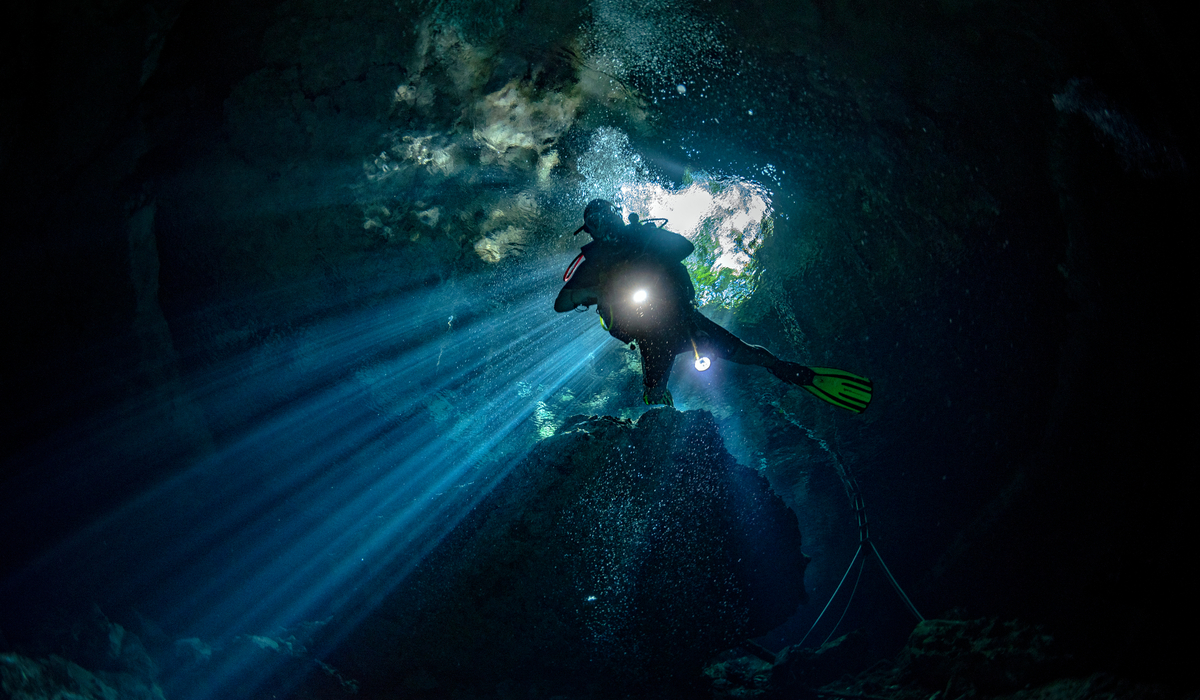A Specialized Diving Experience for Technically Trained Cave Divers
The Riviera Maya coastline is a desired destination for cave diving and exploration. Since the early 1980s when the first explorations began, explorers have worked tirelessly to understand and reveal the caves in the area. Cave diving is a highly-trained, technical sport. Cave divers who come to the area witness some of the most decorated caves in the world!
Tracing the History of the Maya in This Delicate Cave System
In the state of Quintana Roo, on the peninsula’s Caribbean coastline, all the fresh water moves underground through shallow caves. These caves have provided water to communities for centuries. In recent years, cave explorers have used the cave systems as archeological sites to learn more about the environment, the culture and history of Mexico. More than twenty years after the first explorations, roughly two hundred miles of submerged caves have been discovered and explored, establishing the Yucatan peninsula as the home of the world’s largest and most spectacular underwater caves. Cave divers from around the world travel to the Riviera Maya to dive in these ancient waterways and enhance their cave diving knowledge.

What You Need to Know About Cave Diving
Cave diving is technical diving that requires enhanced training and knowledge. What defines cave diving from cavern or cenote diving is the level of certification and the areas that divers can explore and experience. Cavern diving is defined by the proximity to ambient light. Open water certified divers with a trained guide can experience the caverns as there is always an exit to the surface. Cave divers can enter the cave system where they will experience long tunnels, restrictions, no ambient light and more.
Learn to Cave Dive and Discover Some Ancient Cave Systems
Gary and I are trained cave divers and explorers. Underwater caverns and caves can be quite seductive to open water scuba divers and we get many questions about the training and certification process. Cave training is not easy, but if you are up for the challenge, the rewards are worth it! The techniques taught in the cave course have been developed over many years through trial and error, and lessons learned by accident analysis. This training is essentially a survival course, and the final certification could be equivalent to a learner’s permit. Good cave divers maintain an attitude of continual learning, safety and awareness. If you are up for the challenge, check our list of essential cave diver traits before you dive into this 10 day course:
Good Cave Divers Are:
- Equipped- use simplified, streamlined cave equipment with adequate redundancy
- Cautious- adhere to the rules of cave diving and practice emergency skills
- Conservative- stay within the limits of their training and set a safe dive plan before a dive
- Aware- monitor their comfort level, their buddies, the cave and the guideline during a dive
- Responsible- they are self-sufficient and accept the fact that they may have to solve problems without the assistance
The Cenotes are the Doorways to the Caves
In the Yucatan, certified cave divers have access to ancient caves that have been flooded for thousands of years. The rewards are stalactites and stalagmites with each cave system being different, each portion of the cave unique. This is why cave divers seem to come and never leave the Riviera Maya. There are other caves in the world to dive, but not as beautiful or decorated at the ones in the Riviera Maya.
